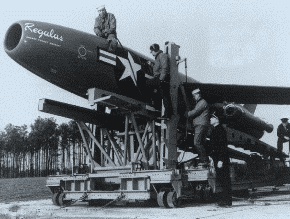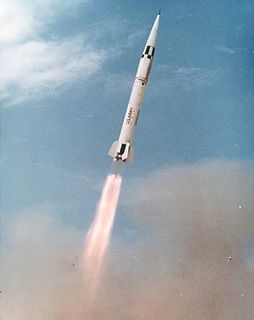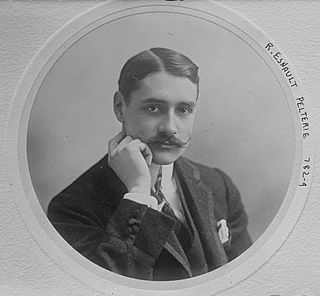The Berthold Seliger Forschungs- und Entwicklungsgesellschaft mbH (BSFEGmbH) was a company founded by German rocket technical designer Berthold Seliger in 1961. Seliger was a former assistant theoretician professor Dr. Eugen Sänger. The company developed and built prototypes of sounding rockets and launched them near Cuxhaven. The BSFEGmbH cooperated strongly with the Hermann-Oberth-Gesellschaft, of which Berthold Seliger was a member. The first rocket developed by the BSFEGmbH was an improved version of the Kumulus, which was first launched on 19 November 1962 and reached a height of 50 kilometres. On 7 February 1963 the BSFEGmbH launched a two-stage rocket with a maximum height of 80 kilometres and, on 2 May 1963, they launched a three-stage rocket with a maximum flight height of more than 100 kilometres. The latter rocket may have attained the highest flight altitude of all rockets built in post-war Germany. The signals from all these rockets were also received at the observatory in Bochum (300 km SSW of Cuxhaven). After May 1963 the BSFEGmbH worked on the improvement of the steering system of their rockets and thought also on military usable rockets.

Germany, officially the Federal Republic of Germany, is a country in Central and Western Europe, lying between the Baltic and North Seas to the north, and the Alps to the south. It borders Denmark to the north, Poland and the Czech Republic to the east, Austria and Switzerland to the south, France to the southwest, and Luxembourg, Belgium and the Netherlands to the west.

Eugen Sänger was an Austrian aerospace engineer best known for his contributions to lifting body and ramjet technology.

A prototype is an early sample, model, or release of a product built to test a concept or process or to act as a thing to be replicated or learned from. It is a term used in a variety of contexts, including semantics, design, electronics, and software programming. A prototype is generally used to evaluate a new design to enhance precision by system analysts and users. Prototyping serves to provide specifications for a real, working system rather than a theoretical one. In some design workflow models, creating a prototype is the step between the formalization and the evaluation of an idea.
On 5 December 1963 the BSFEGmbH gave a flight demonstration of their rockets to military staff of non-NATO-countries. Although their rockets were launched with reduced amount of propellant in order not to violate Allied laws concerning the development of military rockets in Germany and were not fit for military use, the rocket experiments of the Hermann-Oberth-Gesellschaft e.V. and the BSFEGmbH after this date were viewed with great suspicion.

The North Atlantic Treaty Organization, also called the North Atlantic Alliance, is an intergovernmental military alliance between 29 North American and European countries. The organization implements the North Atlantic Treaty that was signed on 4 April 1949. NATO constitutes a system of collective defence whereby its independent member states agree to mutual defence in response to an attack by any external party. NATO’s Headquarters are located in Haren, Brussels, Belgium, while the headquarters of Allied Command Operations is near Mons, Belgium.
In 1964, these experiments were discontinued with a temporary injunction, which is still valid today, after a fatal accident at a rocket demonstration by Gerhard Zucker at Braunlage, although Gerhard Zucker did not cooperate with the BSFEGmbH or the Hermann-Oberth-Gesellschaft e.V. in any way and also had a bad reputation with the members of these societies.
Gerhard Zucker (1908–1985) was a German businessman and rocket engineer. However, none of his machinations proved to be operational, ranging from outright fraud to total failure.
This page is based on this
Wikipedia article Text is available under the
CC BY-SA 4.0 license; additional terms may apply.
Images, videos and audio are available under their respective licenses.

Hermann Julius Oberth was an Austro-Hungarian-born German physicist and engineer. He is considered one of the founding fathers of rocketry and astronautics, along with the French Robert Esnault-Pelterie, the Russian Konstantin Tsiolkovsky and the American Robert Goddard.
Hespenbusch is a farm, which belongs to the municipality of Grossenkneten. Karl Poggensee and the Hermann Oberth society operated between 1952 and 1957 a launch site for small rockets with a maximum flight level of some kilometers, close to this farm. In 1957 the launch activities were shifted toward Cuxhaven, since the available area became too small.
Kumulus is the name of a rocket of the "Hermann-Oberth-Gesellschaft e.V.". The first Kumulus rocket was launched on December 20, 1960 near Cuxhaven. A Kumulus rocket is on display at the Hermann Oberth Space Travel Museum in Feucht.
The Hermann Oberth society is an association named after Hermann Oberth, the German astronautics pioneer, which develops and builds rockets and trains engineers in space technology.
The Cirrus is a sounding rocket with two stages, developed by the "Hermann Oberth Society". Its first launch was on September 16, 1961. The maximum height of the Cirrus, depending on the version, is 35 kilometres or 50 kilometres. A Cirrus rocket is exhibited at the Hermann Oberth Space Travel Museum in Feucht, Germany.

Operation Backfire was a military scientific operation during and after the Second World War, which was performed mainly by British staff. It was part of the Allies' scramble to acquire German technology. With the consent of U.S. General Dwight D. Eisenhower, the operation was orchestrated by Major Robert Staver from the Rocket Section of the Research and Development branch of the Ordnance Office that was tasked in directing the effort to find and interrogate the German rocket specialists who had built the V-2. Since April 30 he had been in the Nordhausen area searching the smaller laboratories for V-2 technicians. Also Auxiliary Territorial Service (ATS) Junior Commander Joan Bernard played a role in this operation.
Between 1933 and 1964 numerous rocket experiments were carried out in the area of Cuxhaven, Germany.

Rocket mail is the delivery of mail by rocket or missile. The rocket lands by deploying an internal parachute upon arrival. It has been attempted by various organizations in many different countries, with varying levels of success. It has never become widely seen as being a viable option for delivering mail, due to the cost of the schemes and numerous failures.
Seliger Rocket is the designation for the sounding rockets of the Berthold Seliger Forschungs- und Entwicklungsgesellschaft mbH. They were
- A single-stage rocket with a length of 3.4 metres and a takeoff thrust of 50 kN. This rocket was first launched on November 19, 1962 near Cuxhaven and reached a height of 40 km.
- A two-stage rocket with a length of 6 metres and a takeoff thrust of 50 kN. This rocket was first launched on February 7, 1963 and reached a height of 80 km.
- A three-stage rocket with a length of 12.8 metres, a diameter of 0.56 metres and a takeoff thrust of 50 kN. This rocket was first launched on May 2, 1963 with reduced fuel and reached an altitude of 110 km. Later with maximum fuel it reached a height of 150 km.
The Mohr Rocket was a sounding rocket developed by Ernst Mohr in Wuppertal, Germany.

The MGM-29 Sergeant was an American short-range, solid fuel, surface-to-surface missile developed at the Jet Propulsion Laboratory. The missiles were built by Sperry Utah Company. The Sergeant was the fourth and last in a series of JPL rockets for the US Army whose names correspond to the progression in Army enlisted ranks, starting with Recruit, Private and Corporal.

Robert Albert Charles Esnault-Pelterie was a French aircraft designer and spaceflight theorist. He is referred to as being one of the founders of modern rocketry and astronautics, along with the Russian Konstantin Tsiolkovsky, the German Hermann Oberth, and the American Robert H. Goddard..
In Germany, military test rockets were launched in Peenemünde and Cuxhaven, and larger non-military rockets were launched in Hespenbusch, Cuxhaven and Zingst.
In World War II, A4-rockets were also launched as weapons from several western areas of Germany. Several launchpads were also constructed for the Bachem Ba 349, developed in 1944/45.

The Civilian Space eXploration Team, known as CSXT, is a team of around 30 civilians interested in private spaceflight. The team was created by Ky Michaelson. Having conducted multiple rocket launches in an attempt to establish altitude records, CSXT became the first entity to officially launch an amateur rocket into space on May 17 2004, with the successful launch of its "GoFast" rocket to 116 km altitude, an altitude verified by FAA analysis of the team's flight data.
German Society for Aeronautics and Astronautics is a German aerospace society. It was founded in 1912 under the name of Wissenschaftliche Gesellschaft für Flugtechnik (WGF). It is the second oldest technical and scientific society in aerospace in the world.

Reinhold Tiling was a German engineer, pilot and a rocket pioneer.
RLV-TD is the first unmanned flying testbed developed for the Indian Space Research Organisation (ISRO)’s Reusable Launch Vehicle Technology Demonstration Programme. It is a scaled down prototype of an eventual two-stage-to-orbit (TSTO) reusable launch vehicle.










